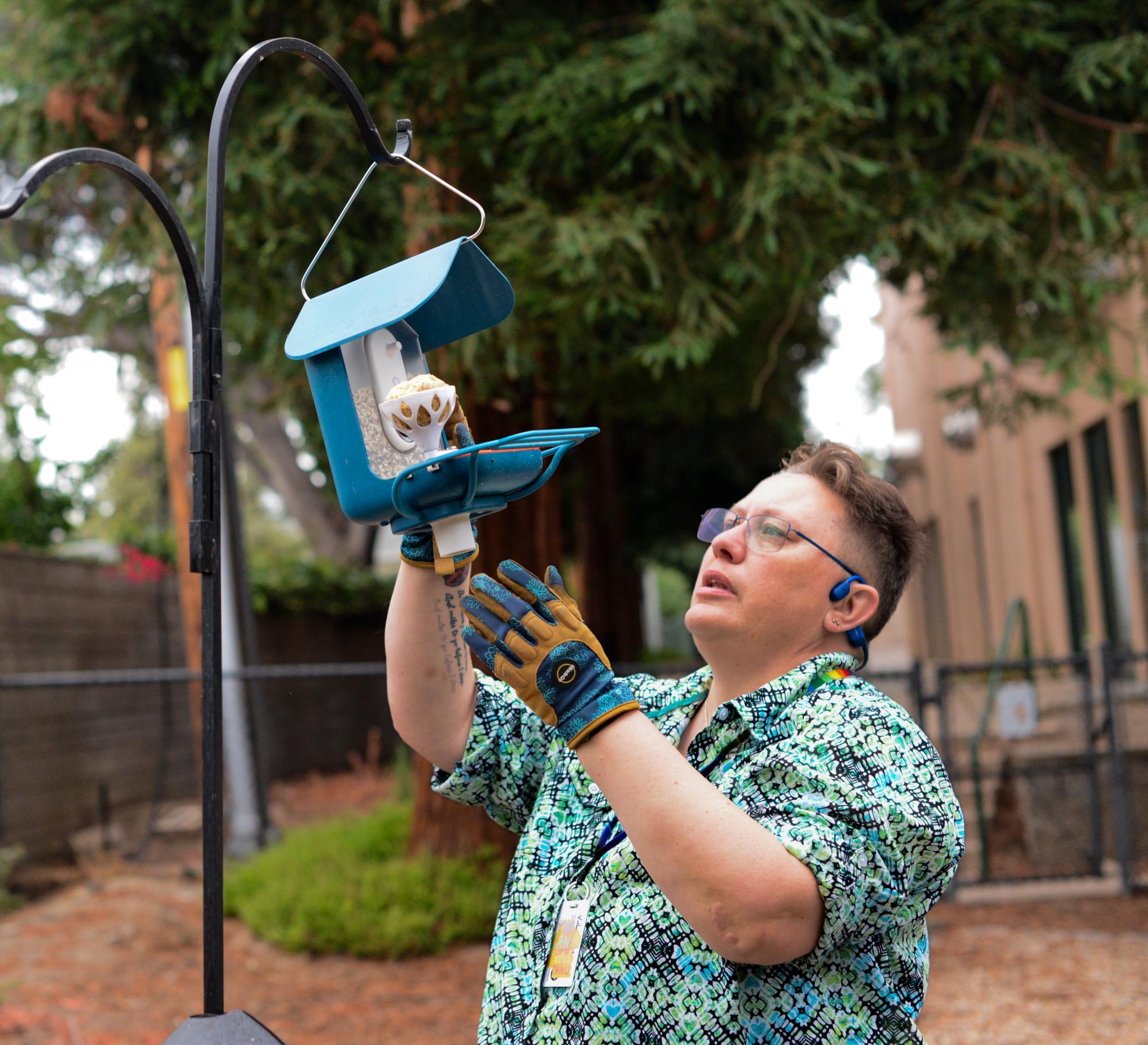In the early hours of dawn before students and faculty arrive to start their day, birds gather across the school, from Patil to Shah to the Graduate’s Grove.
While many people overlook the nature on campus as they rush to classes, several bird lovers have embraced wildlife by installing feeders, helping a community of animals thrive.
Director of Learning, Innovation and Design Diane Main installed four bird feeders behind Patil Theater over the summer. After developing a keen interest in birdwatching, she started noticing more birds in the area where she lives and works, especially when going on walks on the weekends at Parkway Park in Santa Clara. Because of her growing passion, she installed a Bird Buddy, a smart bird feeder equipped with an attached camera that captures photos and videos of birds, enabling the owner to track and identify the species that have visited their feeder.
“I saw some of the other feeders on campus, and I wanted to set up a feeder with a Bird Buddy, but I needed it to be in an area where it was off limits to people,” Main said. “I wanted there to be a space that we could have here on campus where you can sit quietly and observe, whether it’s the squirrels or the birds or the occasional neighborhood cats that come through.”
Several different species of birds fly around campus, including house finches, chestnut-backed chickadees and mourning doves. The camera often captures them when they come to eat. Besides serving as her passion project, birdwatching has become an integral part of Main’s mindfulness and self-care routine.
“Often when there are lots of birds in a place, that means that place is doing well environmentally,” Main said. “If there aren’t a lot of birds in a place, you know there probably isn’t enough nature in a place. We’re very lucky where we live. In the morning, when I go walking for exercise, I hear sometimes up to 15 different species of birds.”
Currently, Main’s feeders are filled with black oil sunflower seeds, Nyjer seeds and millet, though she tries to change up the food options every so often. The sunflower seeds are particularly popular for birds, as the oil in the shells provides an energy source.
However, the seeds also affect other animals, like squirrels and cats. Both Main and history teacher James Tate, who installed a bird feeder outside of his classroom in Shah, have had issues with these animals interfering with the birds in hopes of accessing the food inside.
“Squirrels have mastered the art of robbing them,” Tate said. “Any opening that you make that’s large enough for birds, squirrels can get in too and there’s no way to prevent them. There are different configurations and types of feeders, but they’re pretty good at solving them, even ones on long, thin poles and trees. They’re masterful at thievery.”
On top of the concern of other animals, birds can contract contagious and potentially fatal illnesses like avian flu or finch eye, a type of conjunctivitis. Preventing these diseases from spreading requires consistent cleaning to stop the spread of bacteria to other birds that share the feeder.
Main explains her procedure for cleaning her bird feeders, which includes a solution composed of 10% bleach to mitigate any contamination or severe outbreak. She notes that bird feeders that have just been cleaned require a minimum of two weeks without use to maintain sterility.
“I saw a finch that looked like it might have had its one eye closed the other day,” Main said. “Usually I wait to see if I see it twice, whether it’s the same bird or different, because they can spread it amongst each other really quickly, especially when they have to poke their head into a space to get seeds.”
Despite the work required to maintain a functioning bird feeder, many find that birdwatching provides a sense of calmness. Sophomore Chian-Shin Du had a bird feeder at her house and believed it helped her mental health.
“At my old house, we used to have bird feeders outside of my room, and I could see the bird feeder from my window, and it was nice to watch [birds] while I was studying,” Chian-Shin said.
For those who don’t have access to a bird feeder, the benefits of birdwatching are still available.
“I want to encourage people to follow Birds of Harker on Instagram,” Main said. “They can also go to the website, but if they prefer, on Instagram, I try to post fun stuff on there from the bird yard. It’s fun and funny. Sometimes there’s music, sometimes it’s just natural sounds.”




